Video: Brewers learn new method for profiling malts
New York Craft Malt in Batavia hosted a malt sensory seminar on Friday where brewers could learn about a relatively new way to test and compare malts for flavor profiles.
New York Craft Malt in Batavia hosted a malt sensory seminar on Friday where brewers could learn about a relatively new way to test and compare malts for flavor profiles.
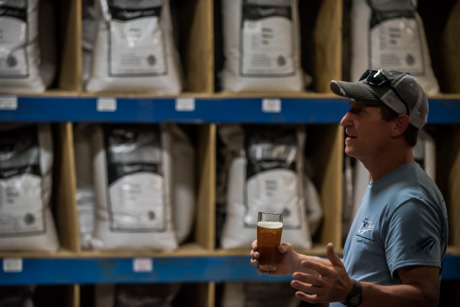
When Ted and Patricia Hawley launched New York Craft Malt in 2013, it could have been characterized as an experiment. It was certainly speculative.
The State Legislature had recently passed a law that opened the door to commercial craft brewing and distilling, but it required 90 percent of the ingredients of any craft brew to come from New York.
Malt, created from barley, is a critical ingredient in beer but what legislators apparently didn't realize was that malting barley hadn't been grown in New York for nearly 100 years.
The Hawleys recognized an opportunity and they opened New York Craft Malt in Batavia.
"It was very experimental," Ted Hawley said after giving a tour of his malthouse to about 100 people on Wednesday, including beer enthusiasts, farmers, other malters, and brewers. "I had to educate myself on how to malt. I had to learn how to malt with this equipment. I had to learn the equipment and learn the trade, so I've come a long way in a short time."
Today, New York Craft Malt offers more than 40 varieties of malt with an emphasis on flavor and color, the unique attributes of craft malts. Brewers from throughout New York buy Hawley's malts and he now has customers in New Jersey, Pennsylvania, Colorado, Oregon and California.
"The circle is growing," Hawley said.
New York Craft Malt is also no longer the only malthouse in New York. There are 12 now, and each is unique, according to Gary C. Bergstrom, chair of Cornell University's Plant Pathology Department.
"I’ve seen every one of them and I can tell you, every one of them does things a little differently," Bergstrom said. "The word craft really applies here."
The tour of Hawley's operations started with Bergstrom and other members of Cornell's team in a farm field off of Assemblyman R. Stephen Hawley Drive in Batavia where Hawley and Cornell work together to grow experimental barley strains as they try to develop varieties that can not only thrive in New York but also provide what craft malters seek -- a choice of flavors and colors.
Malting in New York fell victim 100 years ago to market forces, the climate (it's not easy to grow barely in New York), and Prohibition. The effort to bring barley back has concentrated on developing strains that can grow well and be disease free in this climate.
"After the legislation passed, we quickly realized that we didn't grow what the whole industry depends on, which is malting barley," Bergstrom said. "We hadn't grown it since Prohibition. We had an immediate challenge and a positive challenge."
Cornell scientists swiftly started studying all of the varieties grown throughout the world to find which might best be adapted to New York.
"We started a breeding project to find our own unique variety of barley," Bergstrom said. "In the meantime, we learned about varieties that do well enough here to grow them and how to adapt them, how to reduce the risks and toxins on them, and how to harvest them to get the best quality we can produce right now."
Hawley has been an integral part of that barley trials, Bergstrom said.
"Ted has been a great partner with Cornell," Bergstrom said. "He's cooperated on trials; he's opened his facility to tours; at the state level he's been a good person to network and share his knowledge with others. He's helped on the education front as well as the research."
After the field tour and the malthouse tour, the group headed over to Eli Fish Brewing Company where master brewer Jon Mager gave a tour of his operation and guests could sample some locally brewed beers.
With a craft beer in hand, Jason Crossett, lead brewer for the New York Beer Project in Lockport, said coming on the tour was an important part of seeing how the whole value chain of craft beer works in New York. It was a chance to meet growers and even though he knows how malting works, he wanted to see how a craft malthouse did it.
"For me, I've done a few beers with Ted's malts but I always wanted to check out his facilities and see how a small malting operation works," Crossett said. "It was very important for me to see how the grain gets from the farmer to the malter to the brewer. To me, it's a cycle. Beer can't be made without the malters doing what they do and the farmers doing what they do and the brewers doing what we do. It takes all of us to make a good product for consumers."
Hawley also emphasized the importance of those cooperative relationships. They are, he said, what has enabled his business to grow and thrive. Early on, a few brewers trusted him enough to work with him and help him develop his product.
"In the beginning, I had bad supplies," Hawley said. "I was learning the trade and now those brewers trust me for quality malt because, without their feedback, I wouldn’t know if I was making something that was good or not. I needed their feedback, their honest, constructive criticism and it has made me where I am today."
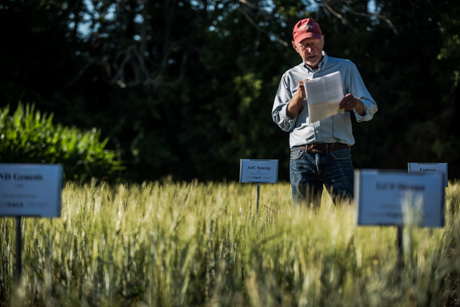
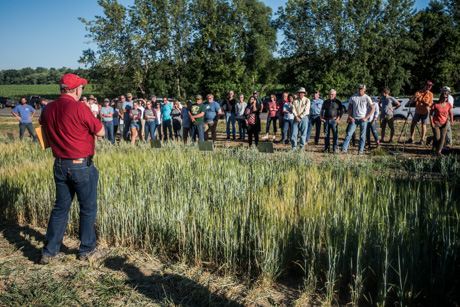
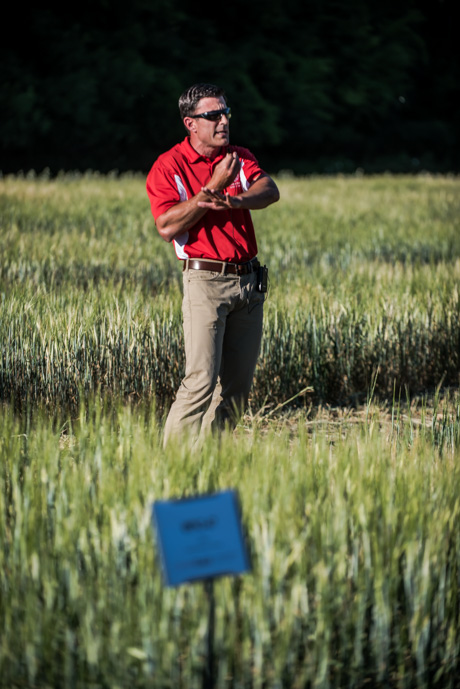
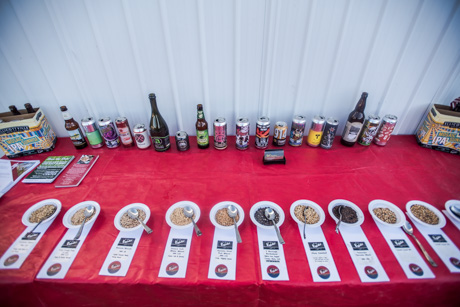

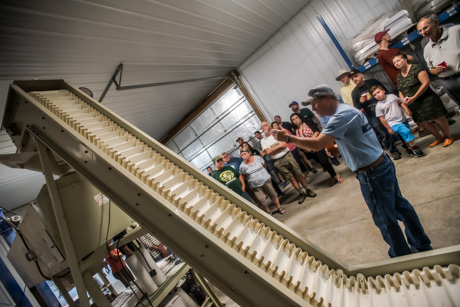
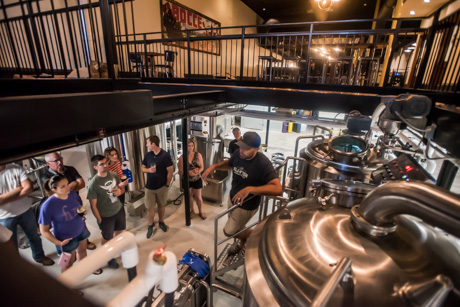
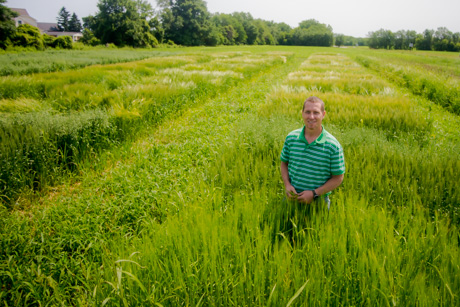
The effort to bring back malting to Upstate New York is a multi-year process.
Working with Cornell University, Ted and Patty Hawley, owners of New York Craft Malt on Bank Street Road, Batavia, are in their third year of running trials of malting grain in Genesee County Farm fields.
There's a plot on Hawley-owned farmland off Bank Street Road and another on Porter Farms, plus the Hawleys have some grain growing on other local farms.
The trial involves 34 varieties of barley, plus wheat and oats.
"We've got to look at all aspects of it, and it's a hard go," Hawley said. "Cornell won't really give their recommendation for four or five years."
The challenges in Western New York have to do primarily with weather -- the year-to-year variances, but more importantly the overall amount of moisture in ground and air.
Malting grains are highly susceptible to fungal diseases, so what researchers want to find are those varieties that grow well in this climate and stay health without sprouting two quickly (once the grain head sprouts, it can no longer be malted).
"Our region is very finicky," Hawley said.
The process involves two key sets of analyses.
First, researchers want to determine how well a variety grows locally, or its agronomics for a farmer. It's important to determine the quality and quantity of the protein, how it germinates and its yield (more yield, more profit per acre).
Second, the grain needs to be malted. The test isn't about taste or any subjective measurement. Researchers are looking at protein, enzymes and how well it malts.
Brewers are looking for good, locally grown grains because the farm brewery law requires locally produced, craft beers to contain a certain percentage of local agriculture product.
But Hawley said local brewers and growers are also looking to produce an interest among consumers to seek out totally local beers. They are working together on a marketing plan that would provide bars with a "Local" tap that would only be attached to kegs of locally brewed beer that uses only locally grown ingredients.
"I think once the consumer wants it, brewers are going to have to give it to them and then I think it's going to grow," Hawley said.
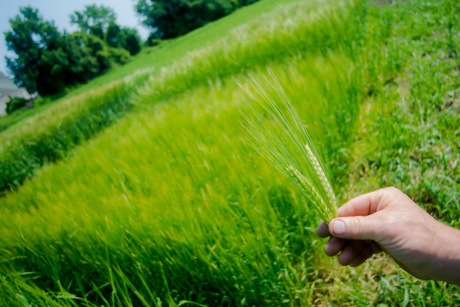
A two-row variety and a six-row variety.
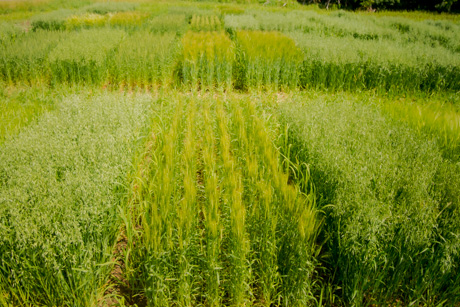
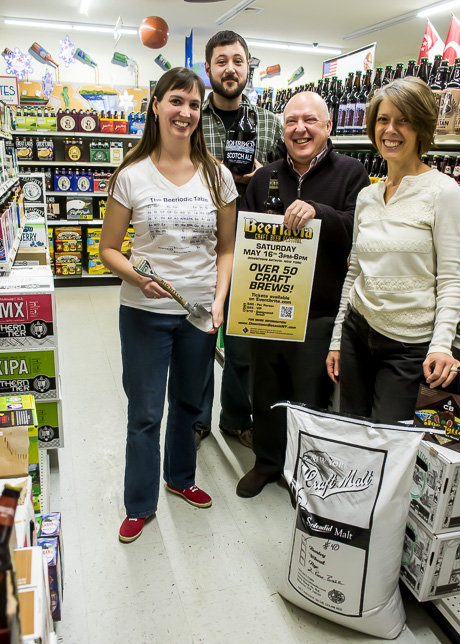
The craft beer business is growing in Western New York with new breweries popping up from Watertown to Buffalo, and Batavia stands at its epicenter.
Tapping into the renewed fascination with craft beer, the Batavia Business Improvement District (BID) is hosting "Beertavia" to introduce people to regional brews. Beertavia will be held from 3 to 6 p.m., May 16, in the Angotti Beverage Corp. parking lot, off School Street, between Jackson and Center.
The event will highlight Downtown Batavia, as well as recognize the city as a geographic center for beer-making. The agricultural resources within the county -- hops are grown locally -- makes Batavia a hot spot for local breweries. Additionally, local production, consumption and distribution make craft beer an attractive business venture. Plus, by-products or waste from the beer-making process can be sold to farms.
BID believes that craft breweries have great potential to benefit this community.
Beertavia is more than a beer festival. It is a community event showcasing local restaurants and acts as a host to microbreweries from all over the state. Fare from Papa Pasquale’s Italian Eatery, Sweet Pea’s Cupcakery Cafe, and Sunny’s Restaurant are on the menu thus far.
The BID is encouraging all local restaurants to participate. Breweries planning to attend are: Abandon Brewing (Penn Yan), Big Ditch Brewing Company (Buffalo), Brewery Ommegang (Cooperstown), Custom Brewcrafters (Honeoye Falls), Empire Brewing Company (Rochester & Syracuse), Keuka Brewing Company (Hammondsport), Resurgence Brewing (Buffalo), RG Brewery (Brockport), Rohrbach Brewing Company (Rochester), Rusty Nickel Brewing Company (West Seneca), Sackets Harbor Brewing Company (near Watertown), and Upstate Brewing Company (Elmira).
See BID’s Facebook page for a complete list of breweries and other updates.
Brewers can also pit their brew against others in a contest to win the title Western New York’s Brew of the Year.
Tickets are $40 per person – 800 are available for general admission – and $55 for a limited number of VIP tickets. Additionally, special tickets for designated drivers will be available. This event is for those 21 years of age or older. Music will be provided by Stone Row.
BID is currently seeking sponsorship and volunteers for the event and is excited to name The Batavian and New York Craft Malt as leading sponsors. Craft Beer Week runs in conjunction with this event. BID encourages local bars and restaurants to have a tap takeover in their establishments, by which BID will promote the brews each restaurant will be serving.
Tickets or more information can be found at: Beertavia
Photo: Laurie Oltramari, Corey Wolcott, Don Burkel and Patricia Hawley.
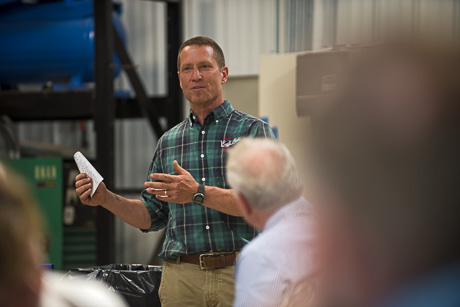
Ted and Patty Hawley have been working for three years to open a malting house in Batavia. The process is almost done, and Tuesday, the Hawleys provided a tour of their new facility on their farm on Bank Street Road to members of the Batavia Rotary Club.
Ted Hawley spoke for about 20 minutes about the history of malting and beer brewing in New York, why he decided to get into malting and how the process works.
Rotary members were able to sample the taste of about a half dozen different barley grains.
At one time, New York was number one in barley and hops, but the emergence of better growing areas and prohibition killed the industries in the state.
In Batavia, decades ago, there was a malt house off Elm Street owned by Charles Fisher, and Genesee Brewery made malt in a facility on Lyons Street.
Even though there are no commercial breweries in Genesee County now, microbreweries are popping up all over the state, even in WNY. The growing demand for malt is what got the Hawleys interested in starting their own operation.
Once the new malt house is fully up and running, Hawley said there's already enough demand from microbreweries in WNY that he doubts any of his malt will be sold to downstate markets.
Before a resurgence in microbreweries in New York (there are now 128), it had been generations since malting barley was grown locally.
It's a challenge to grow in New York because of moist air. Fungus can wipe out whole crops and at harvest time, there's a short window of opportunity to combine the stocks before the grain starts to germinate.
Last year, the Hawley's lost 40 acres of grain because of a day or two of rain right when the barley should have been harvested.
Hawley said the grain looked good in the field. It looked good after the straw was cut and the grain was brought to the malt house, but when he did a pre-germination test, he found that at a microscopic level, it had already germinated, killing all of the enzymes.
Some of that barley went to area distilleries, which can still use barley at that stage, but most of it became livestock feed.
In order to grow enough barley for his three-tons-a-day malting operation, Hawley needs to partner with local farms to grow his barley (and Hawley is still running experiments with Cornell Cooperative Extension to find the right variety of barley to grow locally -- a four to five year process).
It can be daunting to introduce the idea to a farmer who has no experience with malt varieties of barely (which are higher in enzymes and lower in protein than feed barely).
"It's a real challenge to grow it," Hawley said. "When I talk with a farmer about growing it for me, it's hard not to deter them."
To grow it, a farmer must use about half as much nitrate fertilizer as he would for feed or wheat. There's a limited five-day window to spray for fungus, which if missed means the crop is lost. And at harvest, the combine must be run at about half speed so the grain heads aren't scabbed.
For all that, Hawley said, it's still a worthwhile crop for the right farmers.
"It's a very good gamble," Hawley said. "I'll pay them twice what it's worth as feed. It could be very lucrative to somebody who takes good care of the crop."
Previously:
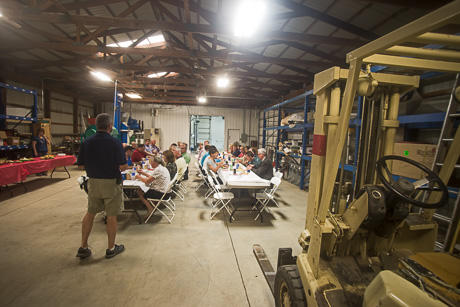
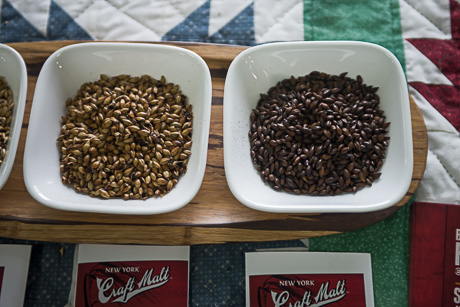
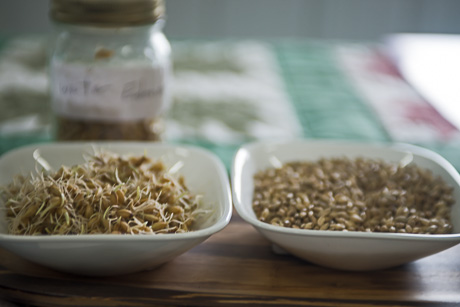
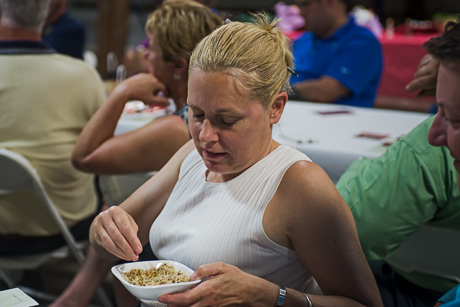
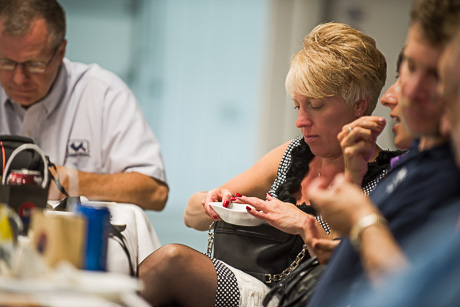
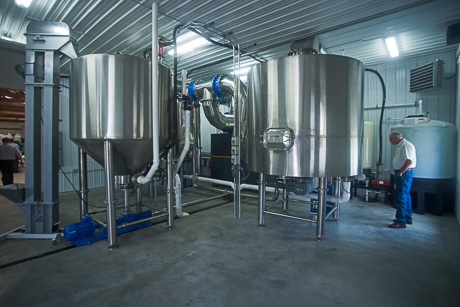
Copyright © 2008-2022 The Batavian. All Rights Reserved. Privacy Policy | Terms of Service